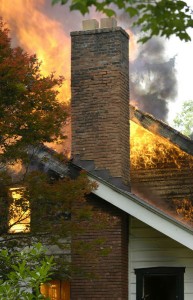Fireplaces are beautiful additions to any living space. They create warmth, add ambiance, and have a way of bringing people together. However, they can create a safety hazard when not used or maintained correctly.
The following five safety tips are just a few of the many ways to ensure you are safely using your fireplace system. By following these fire safety tips, you and your family can feel more secure when using and enjoying your fireplace.
1. Burn the right material
Homeowners should only burn seasoned firewood. Firewood that has been seasoned has been chopped, stacked, and exposed to the elements for at least six months to reduce its moisture content. Seasoned firewood ignites quickly, burns hotter, and produces less smoke and creosote than freshly cut or green wood.
2. Keep kids away
Small children and pets should never be left unsupervised around a fireplace while it is in use. Grates, gates, or safety barriers are also recommended to keep little hands away from open flames. Likewise, safety gates should also be used with gas fireplaces or inserts. While these appliances do not have open flames, the glass fronts can become extremely hot and cause severe burns when touched. Placing a decorative gate or grate in front of the fireplace while it is in use greatly reduces the burn risk for children and pets.
3. Move the décor
While hanging décor from the mantle is a charming way to decorate your home, these decorations should be moved when the fireplace is in use. Furniture, drapes, or other home accents that are too close to the fireplace are at risk of being damaged or ignited by stray sparks or embers from the fireplace. Keep your home’s décor at least three feet away from the firebox, and remove any items that extend over the edge of the mantel while the fireplace is in use.
4. Regularly test alarms
Homes with a fireplace should have smoke and carbon monoxide detectors on every floor of the home, near sleeping areas, and close to the location of the fuel burning appliance. These alarms should be tested at least once every six months to ensure that they are still working properly, replacing batteries as needed. In addition, it is recommended to replace smoke and carbon monoxide detectors every five to seven years. Doing this ensures that you have alarms that meet current safety standards.
5. Call a chimney sweep
Regular chimney maintenance also reduces the risk for chimney fire. During a yearly sweeping, a certified chimney sweep will remove any creosote from the inside of the flue. This tarry substance is a natural byproduct of fuel burning fires, but is also highly flammable; ignition of creosote is one of the main causes of chimney fire. Chimney sweeps
If you have questions about the safety or efficiency of your fireplace, call Pristine Sweeps to inspect or evaluate your system. Our expert staff can not only clean your chimney, but can also help diagnose and repair long term issues such as water entry or drafting problems. Contact us today to make sure your fireplace and chimney are safe for you and your family to use and enjoy!

